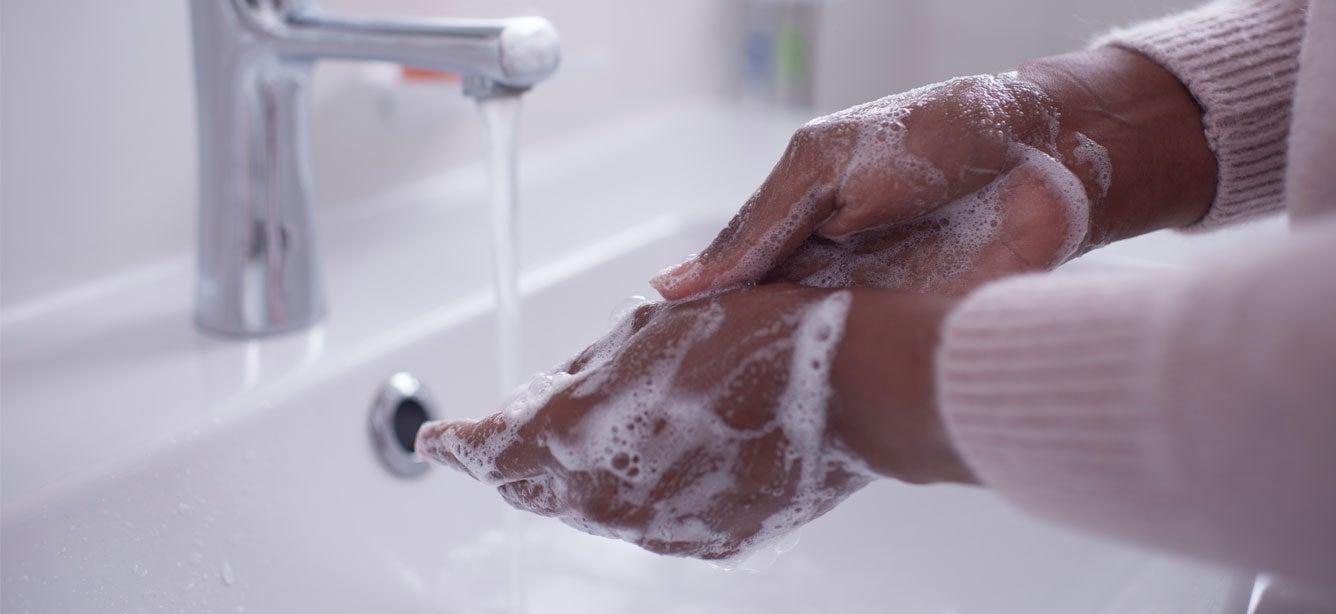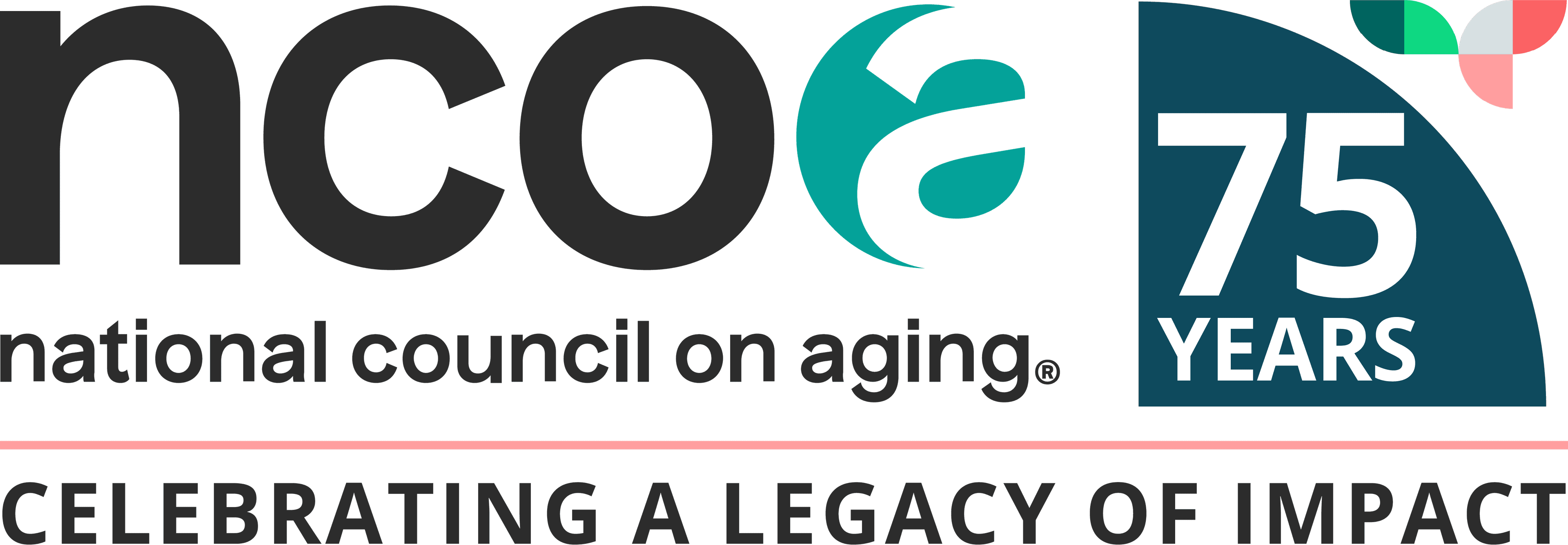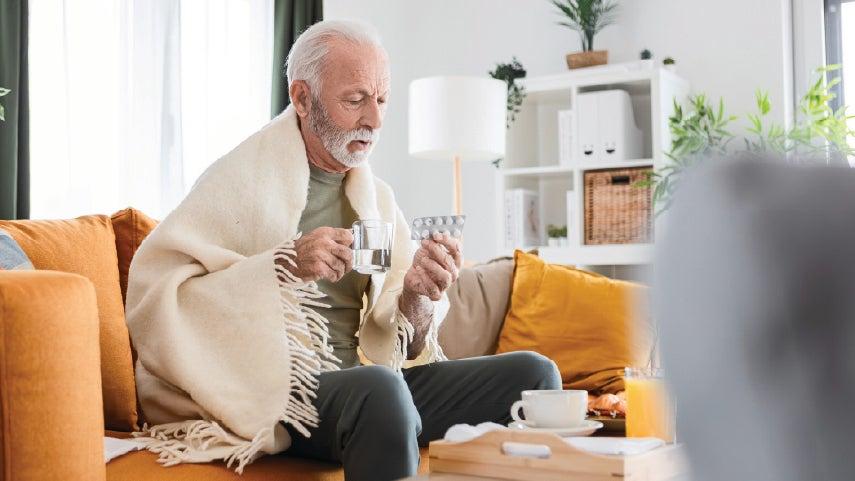COVID Basics: Risks, Vaccines, and Prevention Strategies for Older Adults
6 min read

Related Topics
While the pandemic is long behind us, COVID-19 continues to pose serious risks for older Americans—especially those with other chronic health conditions.
Whether you’re at high risk yourself, or you’re a caregiver to someone who is, find out the latest on COVID risk factors and everyday prevention measures.
Who is most at risk for COVID-19?
According to the Centers for Disease Control and Prevention (CDC), older adults—especially those age 65 and older—are most at risk for serious illness, hospitalization, and death from a COVID infection. More than 81% of deaths have occurred in people 65 and older, whose risk of dying is 97 times higher than that of young adults age 18-29.1
Others at high risk for severe COVID disease include people who have chronic health conditions such as heart disease, lung disease, diabetes, or compromised immune systems. Those who have never been vaccinated against COVID or are not up to date on their vaccines also face an elevated risk of serious illness.
Why are older adults at higher risk for COVID?
The reason COVID is so dangerous for older adults is the same reason they are at higher risk for seasonal flu complications. As we age, our immune system works less efficiently, and we lose some of our natural ability to fight off infection.
Older people also are more likely to have chronic diseases that make it harder to cope with and recover from illness. According to 2025 research, 93% of adults age 65 and older have at least one condition, while 79% have two or more.2
How can older adults protect themselves against COVID?
A multi-layered strategy offers the strongest defense against COVID. These precautions are especially critical if COVID is actively spreading in your community:
- Stay current on vaccination: Vaccination remains the best way for older adults to reduce their risk of severe illness, hospitalization, and death from COVID. Getting the updated 2025-2026 COVID vaccine is vital because protection from both vaccination and past infection fades over time. The updated vaccine is designed to restore robust protection and help guard against the strains circulating right now.
Vaccination can also help you avoid spreading the virus to others if you’re infected: A recent study found that people who got a COVID vaccine within the past six months were 45% less likely to spread the virus to others in their home.3 - Wear a mask when appropriate: Masks help reduce the spread of respiratory viruses by blocking what you breathe in and out. They protect others if you’re sick with COVID and can also protect you—especially snug-fitting N95 or KN95 masks. It’s a good idea to wear the most protective mask you have in crowded spaces, when respiratory illness is spreading in your community, or if you or someone close to you has recently been exposed, is sick, or is recovering.
- Practice good hygiene: Good hygiene is one of the easiest ways to protect yourself and others from COVID. These small steps add an important layer of protection, especially if you or the people around you are at higher risk. This means:
- Washing your hands often with soap and water
- Covering your coughs and sneezes when you’re ill
- Avoiding touching your face help reduce the spread of germs
- Take steps to breathe cleaner air: COVID spreads through tiny droplets and particles released when an infected person breathes, talks, coughs, or sneezes—and the risk is higher indoors in crowded spaces with poor airflow. You can lower your risk by opening windows and spending more time outdoors where the air is fresher. CDC advises using a portable high-efficiency particulate air (HEPA) cleaner to help purify the air in spaces where you spend the most time.
What COVID vaccines are currently available? Are they safe for older adults?
The U.S. Food and Drug Administration (FDA) has approved the 2025-2026 formulations of Moderna's COVID vaccines Spikevax® and mNexspike® and Pfizer's Comirnaty® for use beginning in the fall of 2025.
On Sept. 19, 2025, the Centers for Disease Control and Prevention (CDC) Advisory Committee on Immunization Practices (ACIP) voted to update the immunization schedule for COVID vaccines. Under the new guidance, vaccination for anyone age 6 months and older is a personal decision made together with a health care provider.
“At NCOA, we continue to stand behind evidence-based immunizations as a safe, effective way for older people to protect their health, independence, and quality of life,” says Dorothea Vafiadis, Senior Director of NCOA’s Center for Healthy Aging. “We encourage older adults to discuss their risk factors with their doctor and to get their COVID, flu, and RSV vaccines.”
While it’s possible to get side effects from the vaccine (e.g., redness at the injection site or tiredness), these tend to be mild and temporary. All COVID vaccines, including the mRNA vaccines, have gone through a rigorous approval process, with safety tested in tens of thousands of patients. Ongoing data continues to provide reassurance on their safety and efficacy.
How can caregivers support older adults in preventing COVID?
In addition to encouraging vaccination and other preventive strategies as outlined above, caregivers can take these steps:
- Help schedule and attend medical appointments: Routine checkups are important for staying healthy and catching issues early. Offer to help your care recipient schedule appointments and set reminders. If necessary, arrange transportation to avoid missed appointments.
- Make sure medications and supplies are up to date: Know what medications your care recipient takes and keep track of refills to prevent skipped doses. Having extra supplies on hand—like masks and home COVID tests—is a good idea, especially during cold and flu season.
- Stay connected with health care providers for guidance: If your care recipient develops COVID- or flu-like symptoms, knowing how to reach their provider can help you ensure they get the right support quickly. This is important since most COVID treatments must be started within days of symptoms appearing.
What should a caregiver do if they think an older adult has COVID?
Potential COVID symptoms include fever and/or chills, cough, sore throat, and shortness of breath.
If you think the person you care for has COVID:
- Encourage them to get tested right away to confirm infection, either at a doctor’s office, urgent care center, or at home using a rapid test. See our Guide to COVID-19 Testing for Older Adults.
- Call their health care provider promptly—as mentioned above, today’s antiviral medications must be started early to be most effective.
- Watch for emergency warning signs like trouble breathing, chest pain or pressure, (new) confusion, or an inability to stay awake. Call 911 if they appear.
- Reduce exposure to others by encouraging them to stay home if possible and mask when they need to leave the house.
For more information on protecting yourself and those around you, visit our COVID-19 Safety and Protection resource library.
Sources
1. CDC. People with Certain Medical Conditions and COVID-19 Risk Factors. Updated June 11, 2025. Found on the internet at https://www.cdc.gov/covid/risk-factors/index.html
2. Kathleen B. Watson, PhD, et al. Trends in Mulitple Chronic Conditions Among US Adults, By Life Stage, Behavioral Risk Factor Surveillance System, 2013-2023. Preventing Chronic Disease. April 17, 2025. Found on the internet at https://www.cdc.gov/pcd/issues/2025/24_0539.htm
3. National Center for Immunization and Respiratory Diseases. Updates to COVID-19 Vaccine Effectiveness. June 25, 2025. Found on the internet at https://www.cdc.gov/acip/downloads/slides-2025-06-25-26/03-MacNeil-COVID-508.pdf



